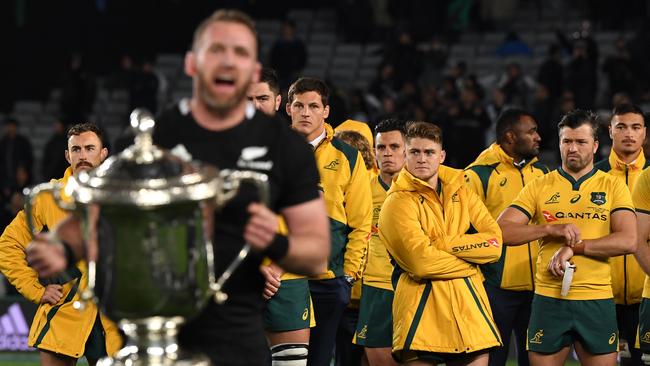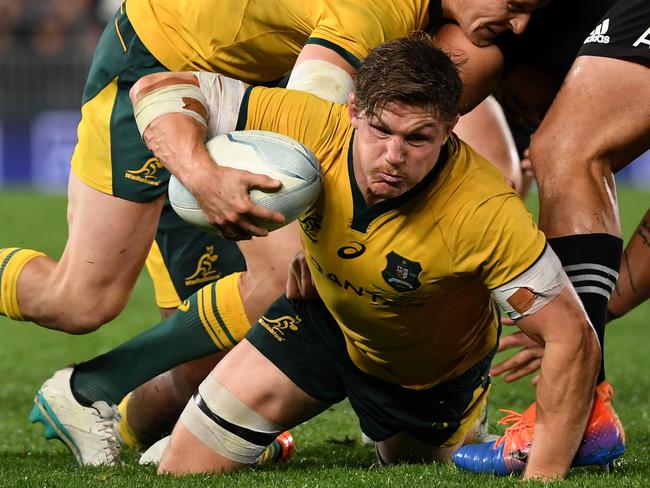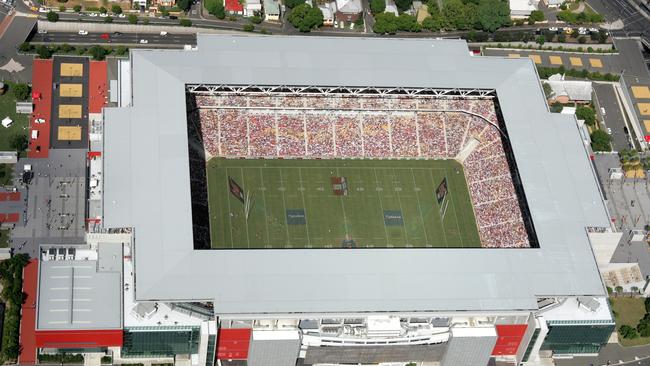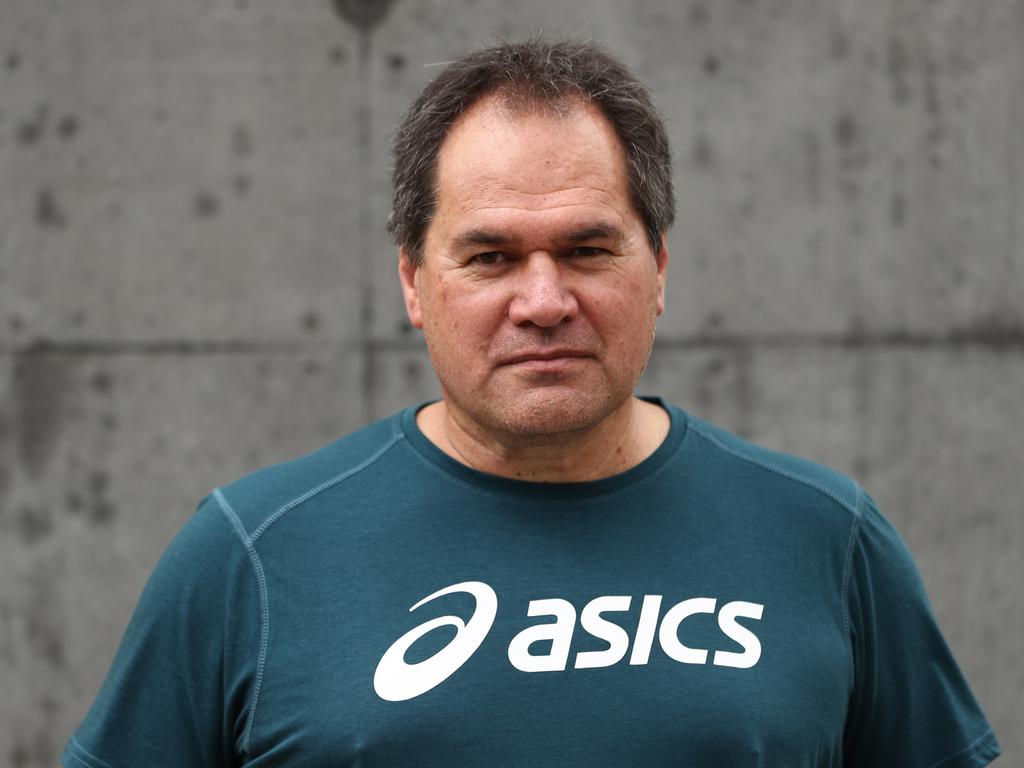Suncorp Stadium the first venue to hold back-to-back Bledisloes
Rugby Australia is planning for the two first two Bledisloe Cup Tests to be played at Brisbane’s Suncorp Stadium.

Rugby Australia is planning for both the first two Bledisloe Cup Tests against New Zealand, on October 10 and 17, to be played at Brisbane’s Suncorp Stadium.
Like so many other plans during the COVID-19 pandemic, everything could change at the last moment. But it has reached the point where a firm decision needs to be made on where the Wallabies will go into camp on September 23 and, according to sources, the order has been given to proceed with Sanctuary Cove.
The 66-person party, 46 players and 20 staff, will serve their two-week quarantine period within a bubble at the five-star resort on Hope Island. It is a venue they have used before – Michael Hooper was first thrust into a leadership role there during the Ewen McKenzie era in 2014 — and both the training ground and gym facilities are within easy walking distance.
Suncorp Stadium had already been scheduled to stage Bledisloe II on October 17, a date that curiously has held firm for more than a year now despite the global pandemic. But when rugby authorities began contemplating the complexity of maintaining a secure bubble over two separate states for both the Wallabies and All Blacks, it quickly became apparent that the only solution was to effectively play the series in a centralised mini-hub.

Suncorp, which the Queensland Government allows to be filled to 50 per cent of its overall capacity of 52,500, is available on October 10. According to the stadium’s general manager, Alan Graham, it has been working with Rugby Australia “on a whole range of things”.
If the October 10 and 17 Tests go ahead as now planned, Suncorp Stadium will become the first venue since the trophy was inaugurated in 1931 ever to stage Bledisloe Tests on consecutive weekends. Indeed, in the overall 117-year history of Australia-New Zealand rugby contests, the only other venue ever to stage back-to-back internationals was the Sydney Cricket Ground and it did so just two days apart — on Saturday June 25, 1910, when the All Blacks won 6-0, and again on the following Monday, June 27, when Australia held the Kiwis scoreless for the first and only time in 166 Tests, winning 11-0.

Had Cbus Super Stadium had a larger capacity, there is every chance the October 10 Test might have been staged on the Gold Coast, but the biggest crowd it has ever held is 27,227.
There was also some suggestion that the North Queensland Stadium in Townsville, which in pre-COVID planning was to have hosted the Wallabies-Fiji Test in July, could have been used. But because the Wallabies and the All Blacks will need to remain in a bubble for the duration of the two Tests, it was felt a centralised base that involved no travelling would work best for both teams.
Melbourne’s Marvel Stadium originally was slated to hold the first Bledisloe Test but when the second-wave of the coronavirus pandemic hit Victoria, that became unworkable, even though the Victorian Government has not officially relinquished the match. Similarly, Sydney’s ANZ Stadium and Perth’s Optus Stadium, where the Wallabies last beat the All Blacks last August in front of 60,000 fans, appear to have been eliminated for logistic reasons.
Officially, the Queensland Government is acknowledging only that the October 17 Test is confirmed but Brisbane is now looking at hosting a sporting extravaganza of two Bledisloes and an AFL grand final within the space of one or two weeks. While the AFL is still debating where and when to stage its title-decider – Brisbane and Perth are the contending cities and October 17 and 24 the proposed dates – but if it opts for October 17 in Brisbane, football fans would be able to attend the AFL Grand Final in the afternoon followed by a Bledisloe Cup Test just a few hours later.
“Thanks to the way we’ve managed this health crisis, Queensland has become the temporary home of Australian sport – playing a crucial role in ensuring several competitions are able to continue in 2020,” Queensland Tourism Minister Kate Jones told The Australian.
“Sport is a huge industry for Queensland, supporting thousands of jobs and pumping millions of dollars into our economy each year through our tourism industry. While the government’s focus remains on Queensland’s health response to this pandemic, we’re always keen to secure more content that could support our economic recovery strategy.”
Meanwhile, the Waratahs have had some welcome news in the lead-up to their make-or-break meeting with the Melbourne Rebels in Sydney on Saturday when young hooker Tom Horton re-signed on a two-year deal.
It was less than a year ago that the 23-year-old Sydney University hooker signed his first professional contract with the Tahs and, despite a series of frustrating injuries, he has progressed to such a point that he has been named in Dave Rennie’s Players of National Interest (PONI) squad.






To join the conversation, please log in. Don't have an account? Register
Join the conversation, you are commenting as Logout